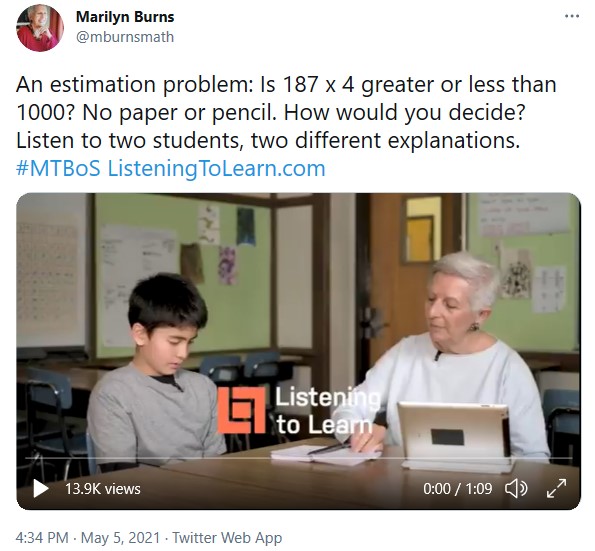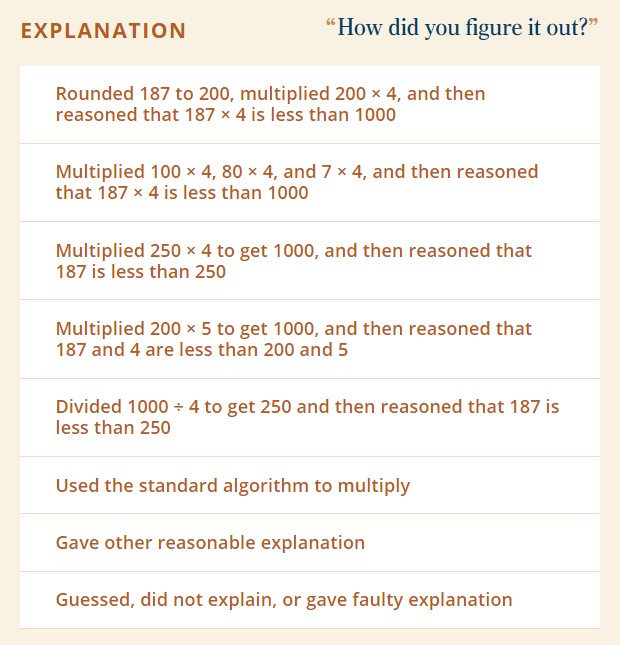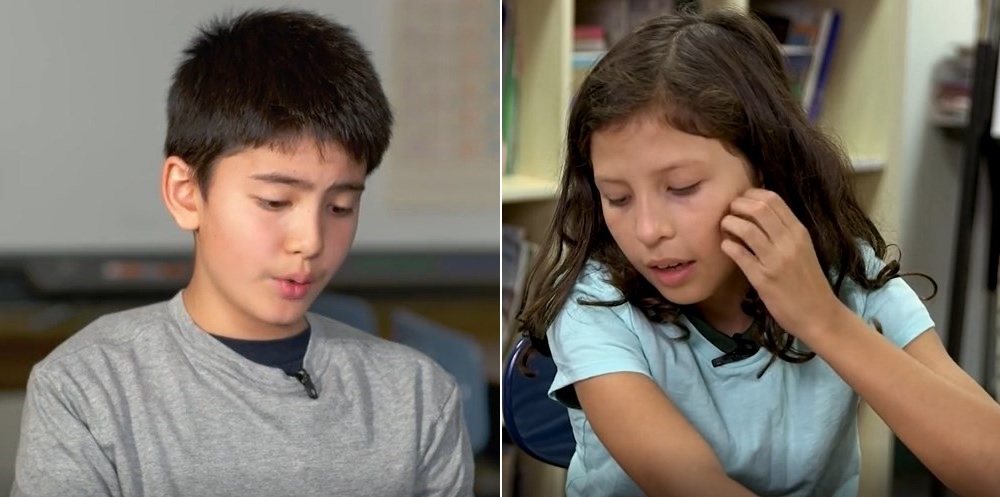I posted this Tweet to feature two students, both fifth graders, answering the same multiplication estimation question.

The question was from Listening to Learn (LTL) Interview 8, Extending Multiplication and Division. One clip shows me interviewing Jacob and the other is of Lynne Zolli, my collaborator on LTL, interviewing Asmara. As we do when interviewing students with Listening to Learn, we asked Jacob and Asmara to answer the question without using paper and pencil and then to explain their reasoning. Both students answered correctly, but each student reasoned in a different way. If you haven’t yet seen the two clips, you can watch them now.
Different Ways to Reason
To explain why the answer to 187 x 4 has to be less than 1,000, Jacob said that he knew that 200 x 5 was equal to 1,000, and then he explained how he used that to reason why 187 x 4 had to be less. Asmara approached the question in a different way. She applied the distributive property, an important and useful reasoning strategy, multiplying 100 x 4, 80 x 4, and 7 x 4, and then reasoning that those products wouldn’t add up to 1,000.
Some people who responded to the Tweet explained how they would think about the problem. Here are two Tweets that offer different explanations from the ones that Jacob and Asmara gave.


How Would I Have Reasoned?
After listening to Jacob and Asmara and reading the Twitter replies, I reflected on how I would have answered the question. I thought about how I might have responded at three different times:
- What might I have done when I was a fifth grader?
- How might I have approached the problem in my early years of teaching?
- What would I have done more recently to answer the question?
As an elementary student, the emphasis of my math learning was mostly on calculating exact answers with lots of paper-and-pencil practice. Mental math wasn’t a regular part of my math experience and making estimates was not typically something we were asked to do. As a fifth grader, I think that I would have wanted to reach for paper and pencil and use the standard algorithm I had learned to figure out the exact answer to 187 x 4 to decide if the product was greater or less than 1,000.
As a beginning teacher, my instruction largely reflected how I had been taught as a student. I think this is typical for many of us when we begin teaching. I didn’t give mental math much, if any, instructional emphasis, and making estimates was always a prelude to figuring out exact answers. Again, I most likely would have reasoned algorithmically.
Over the years, with more experience and opportunities to grow as a teacher, my thinking and teaching changed. I became aware of the importance of reasoning and doing mental math, both of which are now integral to my teaching. Given this problem today, using paper and pencil to calculate an exact answer wouldn’t be my first go-to. Instead, I’d rely on reasoning mentally to estimate.
More about Listening to Learn Interviews
In our Listening to Learn interviews, after we ask students a question and capture their answer, we always follow up by asking, How did you figure it out? For each question, the LTL tool provides a list of possible explanations. Lynne and I compiled the lists of possible explanations for each question from the actual explanations we heard from the many, many students we interviewed. After we listen carefully to a student explain, we select the explanation from the list that most closely matches the way the student reasoned.
Matching Reasoning with Explanations
Here’s the list of explanations for this multiplication estimation question in Listening to Learn. Which explanation would you select for Jacob? For Asmara? For Keith Devlin? For Alice Grimm?

Another Feature of Listening to Learn: Professional Learning Labs
Lynne and I have included in the interview tool what we call Listening to Learn Labs. We’ve found that our many experiences interviewing students and listening to them explain their reasoning have been invaluable for using Listening to Learn effectively. To help teachers benefit from our experience, we’ve created these Labs. They are digital professional learning opportunities that draw from the extensive LTL video library of hundreds of interviews. For each Lab, we select specific clips to create the Lab’s Video Gallery, provide an interactive experience of listening to students and selecting explanations, and provide instant feedback. If you’ve ever taken the weekly New York Times news quiz, you’ve had experience with how this interactivity works. Also included in the Labs are reflections from Lynne and me and instructional suggestions.
Finally
We’re working on some sample Listening to Learn Labs that will be freely available for you to experience. Stay tuned.

